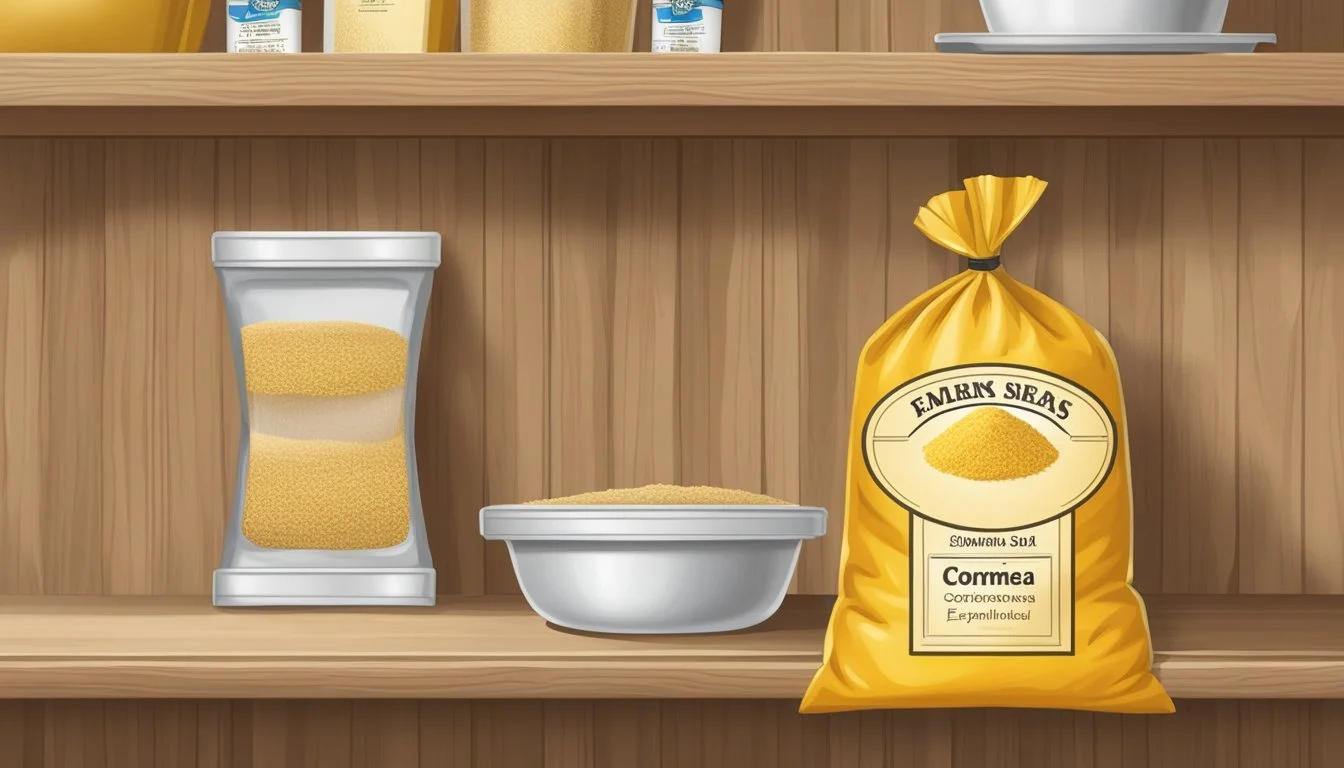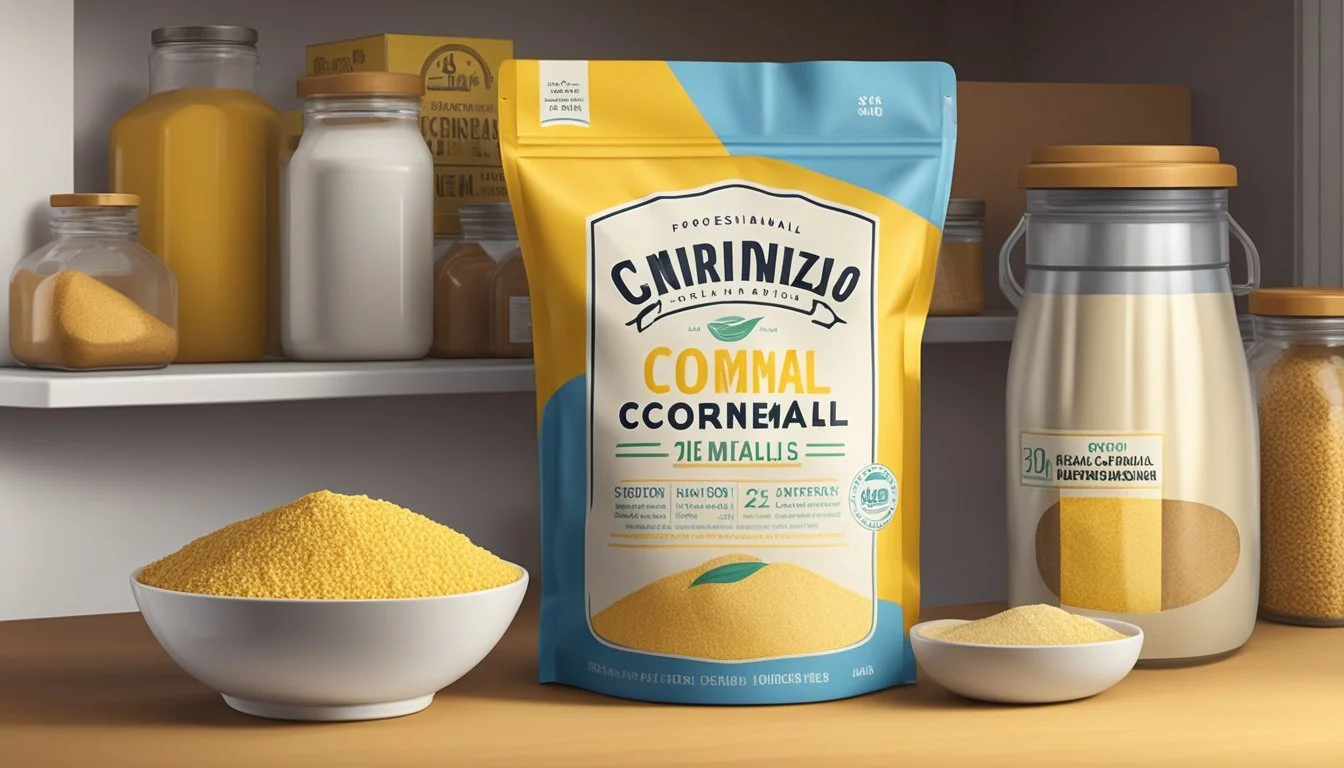How Long Does Yellow Cornmeal Last?
Shelf Life and Storage Tips
Yellow cornmeal, a coarse flour ground from dried maize, is a common ingredient in baking and a staple in many pantries. It serves as a foundational element for numerous recipes, from classic cornbread to breading for fried foods (What wine goes well with fried foods?). Not only is it valued for its versatility and texture, but its shelf life is also a notable attribute. Under optimal conditions, yellow cornmeal can maintain its quality well beyond its best-by date, typically lasting anywhere from 6 to 12 months.
Understanding the proper storage of yellow cornmeal is key to extending its usability. Keeping it in a cool, dry place and within an air-tight container shields it from moisture and pests, two factors that can significantly reduce its lifespan. While most cornmeal comes in packaging suited for pantry storage, transferring it to a sealed container can further preserve its freshness and prevent it from going rancid. If stored with care, its shelf life can be extended, sometimes reaching up to several years without significant loss in quality.
Understanding Cornmeal
Cornmeal is a versatile ingredient central to many cuisines, derived from the milling of dried corn. It plays a crucial role in a range of dishes, from sweet pancakes to savory porridge, and its types and uses vary widely.
Types of Cornmeal
Cornmeal can primarily be classified by granularity and processing. The main types of cornmeal include:
Whole-grain cornmeal: Retains the husk, germ, and endosperm, offering a robust flavor.
Degerminated cornmeal: The germ is removed to extend shelf life.
Bolted cornmeal: Sifted through a fine screen to remove large particles.
Unbolted cornmeal: Contains larger particles for a coarser texture.
Blue cornmeal: Made from blue corn, known for its sweet flavor.
Other variants include stone-ground, which often retains more nutrients due to less processing, and some are even enriched with vitamins and minerals.
Cornmeal Versus Corn Flour and Other Variants
Cornmeal differs from corn flour in terms of texture; cornmeal is coarser, while corn flour is finely ground. Additionally, cornmeal should not be confused with cornstarch, which is a fine, powdery thickening agent.
Cornbread mix: Often a blend of cornmeal, flour, and leavening agents.
Polenta: Both a dish and a type of cornmeal, typically a coarser grind.
Pancakes and porridge: Recipes may specify a particular type of cornmeal for desired texture.
Nutritional Value
Cornmeal is known for its nutritional benefits, including being a source of fiber and essential minerals. It typically includes:
Carbohydrates
Protein
Fiber
Vitamins (such as B vitamins)
Minerals (such as iron and magnesium)
The removal of the germ in degerminated cornmeal decreases both the fat content and some nutritional value, especially B vitamins.
Cornmeal in Recipes
Derived from either white or yellow corn, cornmeal is integral in recipes around the world. Specific dishes might require a certain type or grind of cornmeal to achieve the right flavor and texture.
Cornbread mix: A convenient way to bake cornbread, usually requiring the addition of liquid.
Pancakes: A lighter texture can be achieved with fine cornmeal.
Porridge: Typically made with coarser grinds, such as polenta.
Cornmeal can act as a base for gluten-free recipes, increasing its culinary applicability.
Shelf Life of Cornmeal
Cornmeal is a pantry staple with a considerable shelf life, influenced by storage conditions and the type of cornmeal. Properly stored, it can last months to years before showing signs of spoilage.
Factors Affecting Shelf Life
The shelf life of cornmeal is primarily affected by moisture, heat, and exposure to air. To maximize longevity, it should be stored in an air-tight container in a cool, dark, and dry place. If these conditions are met, yellow cornmeal can last:
At room temperature: 6 to 12 months
Oxygen-free packaging: Over 10 years
Exposure to high temperatures or moisture can significantly decrease this shelf life, as it encourages the growth of mold and the development of rancid odors.
Identifying Spoilage
Cornmeal that has gone bad will exhibit changes that are sensory detectable, specifically:
Smell: A rancid or off odor indicates spoilage.
Texture: Clumping from moisture indicates spoilage.
Color: Any discoloration could suggest mold or spoilage.
Taste: A sour or unusual taste can also indicate that the cornmeal is no longer good for consumption.
Shelf Life by Cornmeal Type
Different grades of cornmeal may have varying shelf lives. Whole grain cornmeal, which contains the germ, typically has a shorter shelf life due to the higher fat content that can turn rancid. Processed or degerminated cornmeal, with the germ removed, has a longer shelf life, as it is less likely to turn rancid.
Whole grain cornmeal: Typically lasts less than 12 months.
Degerminated cornmeal: Can last later than the best by date if stored properly.
While the best before or expiry date provides a guideline, observing the cornmeal for changes in quality, smell, color, and texture is essential.
Proper Storage Techniques
To maintain freshness and extend the shelf life of yellow cornmeal, it's important to store it correctly. Various methods suit different needs, but they all revolve around protecting the cornmeal from moisture, light, and pests.
Storing Cornmeal at Room Temperature
Yellow cornmeal retains its quality when stored at room temperature in an airtight container. A cool, dark place, such as a pantry or kitchen cabinet, is ideal. Airtight containers prevent moisture and pests from spoiling the cornmeal. For added protection, one can use oxygen absorbers in containers or seal the cornmeal in mylar bags. The latter can significantly extend the cornmeal's usability, potentially preserving it for over a decade.
Tip: Keep your containers in a cupboard away from any heat sources like stoves or sunlight.
Refrigerating Cornmeal
If room temperature conditions are not stable or are too humid, storing cornmeal in the refrigerator helps to keep it fresh. Place the cornmeal in a sealed plastic bag or an air-tight container to prevent it from absorbing odors and moisture from the fridge.
Tip: Label the container with the current date to keep track of freshness.
Freezing Cornmeal
For long-term storage, freezing cornmeal is an excellent option. Freeze cornmeal in an air-tight container or ziplock bags to prevent freezer burn and moisture ingress. This method can preserve your cornmeal's freshness for years.
Tip: Thaw frozen cornmeal at room temperature before using it to avoid any moisture-related issues when cooking.
Preventing Contamination and Pests
Preserving the quality of yellow cornmeal involves protecting it from common contaminants and pantry pests that lead to spoilage. Effective storage methods and cleanliness are paramount.
Common Pests in Pantry
Common pests that threaten dry goods like cornmeal include weevils, Indian meal moths, and ants. These insects not only consume the cornmeal but can also leave behind eggs and larvae, leading to further infestation. The fineness of the grind can influence pest infestation rates, with finer grinds being at a higher risk due to their increased surface area.
Weevils: Small, brown beetles that can bore into sealed packages.
Indian Meal Moths: Their larvae produce silk that can clump the cornmeal.
Ants: Can enter through tiny spaces and contaminate food supplies.
Protective Measures against Infestation
Storage methods play a crucial role in preventing the infestation of pests and the potential growth of mold in cornmeal. Keeping cornmeal in an airtight container is essential, as it creates a barrier against insects and pests. The use of oxygen absorbers can eliminate moisture and prevent spoilage, reducing the risk of mold and botulism.
Airtight Containers: Use containers with tight-fitting lids to prevent pest access.
Cool Environment: Store cornmeal in a cool, dry place to deter pest inhabitation and minimize the risk of mold.
Oxygen Absorbers: These help keep the product dry, preventing mold and spoilage.
Regular Inspection: Check cornmeal frequently for signs of bugs or spoilage, like an off smell or change in texture.
Freezing: Storing cornmeal in the freezer can prevent both insect infestation and freezer burn.
Using Cornmeal Past Best By Date
When cornmeal passes its best by date, its freshness is not guaranteed, and evaluating its quality before use is crucial. The safety of using yellow cornmeal past this date largely depends on its storage conditions and signs of spoilage.
Assessing Viability for Use
Storage Conditions: Cornmeal's longevity is influenced by how it is stored. If kept in a cool, dry place—and preferably in an airtight container—cornmeal can be usable even after its best by date. Checking for a rancid smell or any visible mold is essential, as these are indicators that the cornmeal has spoiled.
No Off Smells: A rancid smell is a clear sign the cornmeal should not be consumed.
Visible Mold: Discard immediately if mold is present.
Risks of Using Expired Cornmeal
Using expired cornmeal carries certain risks. If it has developed a rancid smell, it indicates that the oils in the cornmeal have gone bad, which can cause the nutritional value to degrade. Expired cornmeal might also harbor harmful bacteria or molds, leading to foodborne illnesses.
Nutritional Quality: While expired cornmeal may retain some level of protein, minerals, and fiber, its quality is not assured. Rancid cornmeal should not be consumed, as this compromises both taste and safety.
Alternative Uses for Stale Cornmeal
If the cornmeal is past its best by date but doesn't show signs of spoilage, it might not be ideal for recipes requiring optimal flavor, such as cornbread or tortillas. However, it can still serve as a thickening agent for soups and stews or be used where its altered flavor won't be as noticeable.
Non-Culinary Uses: Stale cornmeal can also be repurposed for non-edible uses, such as:
Gardening: As an addition to compost or as an insect deterrent.
Cleaning: Mixed with oil for a natural scrubbing solution.
Remember, it's crucial to err on the side of caution when considering using past-date pantry staples like cornmeal to avoid potential health risks.
Conclusion
Yellow cornmeal typically lasts between 6 to 12 months when stored properly in a cool, dry place. Its shelf life can extend beyond this if it is kept in an airtight container, far from sources of heat and moisture. After opening, cornmeal should be used within 3 to 5 months to ensure quality and taste.
The longevity of cornmeal may also hinge on the use of preservative methods. For example, when stored with oxygen absorbers in Mylar bags, it has the potential to remain edible for over 10 years. Yet, it is always imperative to check for signs of spoilage such as an off odor, taste, or visible mold before use.
Here are key points for maintaining the shelf life of yellow cornmeal:
Storage Conditions: Keep it in a cool, dark place in an air-tight container.
Shelf Life: Normally 6-12 months; with careful storage can last significantly longer.
Post-Expiration: An unopened package may last an additional 6-9 months past the expiration date if stored correctly.
After Opening: Use within 3-5 months for best quality.
To maintain its usability, always handle cornmeal with clean, dry utensils and seal it properly after each use. Consumers are recommended to buy quantities they can reasonably consume within the product's shelf life to avoid wastage and ensure food safety.






